June 2012
Monthly Archive
June 24, 2012
For anyone who does not know, I will preface this by saying that I am a vegan. Vegans do not eat any animal products including meat, fish, eggs, milk, butter, cheese, etc. Before I left to Japan, I was told by many people that it would be difficult to be a vegan here. That is because in Japan, fish is put into numerous foods. However, from my experience, with a basic knowledge of Japanese language and characters, it is not very difficult at all. In fact, I find more places in Japan to be vegan friendly than in America. Here are just a few pictures of some of the things I found in restaurants and grocery stores that are vegan. Everything is labeled from left to right:
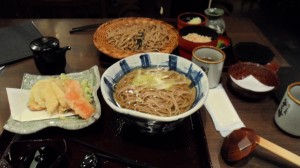
Veggie tempura and cold soba (buckwheat) noodles, hot soba with konbu dashi (seaweed instead of fish soup stock), fried rice, and green tea
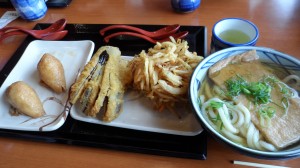
Inari zushi (fried tofu stuffed with rice), eggplant and onion tempura, kitsune udon (fried tofu with udon noodles in konbu dashi), and of course green tea
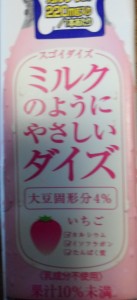
Strawberry soymilk
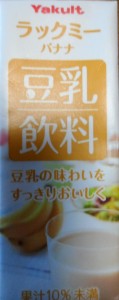
Banana soymilk
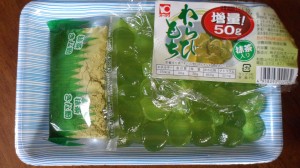
Green tea warabi mochi
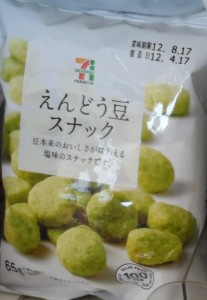
Green pea puffs
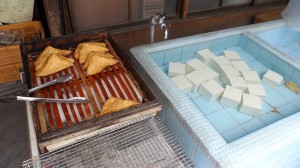
Freshly made fried tofu and raw tofu from a vendor on the side of a street
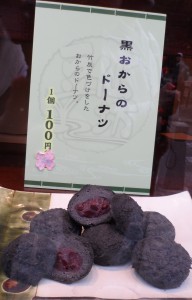
Black okara (similar to tofu) donuts filled with sweet bean paste (no eggs or milk used!)
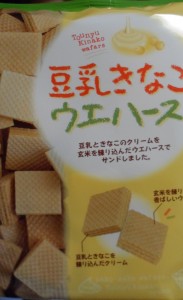
Soymilk wafers (these were right next to the non-vegan cow's milk ones)
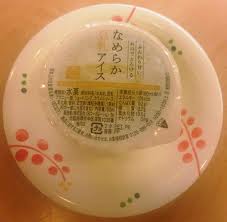
Soymilk ice cream! This was at a sushi place, which I find crazy since it is practically impossible to find vegan ice cream at ANY restaurant in America)
And of course, if you make homemade Japanese food, there is not reason at all for it to be difficult. Check out some of these homemade meals:
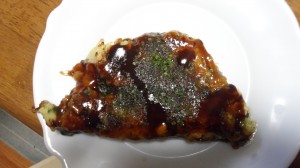
Okonomiyaki made without eggs

Japanese hot Pot (I forgot to take a picture before I ate it!)
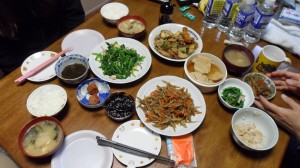
Seaweed, ume (plum), blanched spiced spinach, miso soup, veggie tempura, kinpira (sauteed carrots and gobo root), and bamboo
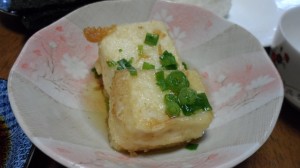
Battered and fried tofu topped with green onions
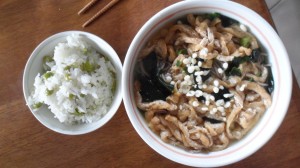
Peas and rice, kitsune (fried tofu), seaweed, and soba (buckwheat) noodles
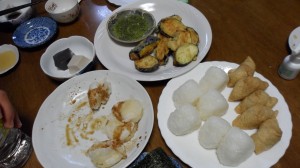
Goma (sesame) tofu, fried mochi, tempura with green tea dipping powder, rice balls, inari zushi (fried tofu stuffed with rice)

Rice, miso soup, miso glazed sauteed egglant, sauteed mushrooms, pineapple. miso tofu, blanched spiced spinach
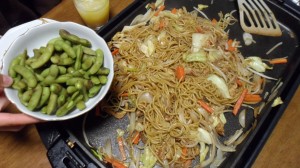
Edamame (boiled soybeans) and yakisoba (stir fried soba noodles with veggies)
Sometimes, I am truly surprised at the vegan products I find in Japan. It was a complete accident that I found most of the products like the vegan soymilk ice cream and okara donuts. I think there might be a wider vegan selection here because tofu and soymilk are much more popular, therefore it is not as strange to make soy treats.
Overall, I do not find it at all difficult to be vegan in Japan. I would not say it is easier or more difficult than being a vegan in the United States. There are more vegan specialty foods for sale in America, but there are more vegan restaurant options in Japan, so I think it is about the same.
June 18, 2012
So, Garrett and I went on a trip to Nara. It is a beautiful city with many traditional looking buildings and many sights to see.
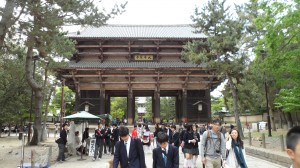
Entrance to Todaiji Temple

Statue in Todaiji Entrance
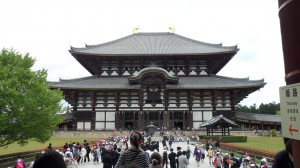
Todaiji Temple
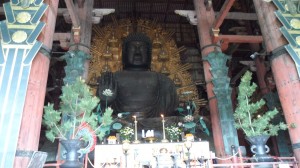
Daibutsu (big buddha)
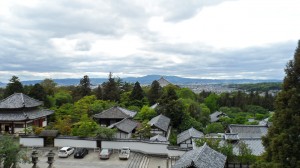
View of Nara
In Nara, there is Nara Park, which is famous for it’s amazingly docile (and cute!) deer. These deer are just as tame as everyone says. You can buy crackers to feed them, but I would not recommend it because when you do they get crazy. If you have food, it is likely you will be surrounded, and they will probably bite at your clothes. Even if you do not have a treat, you can still walk right up to them and pet them. Sometimes they even follow you around!
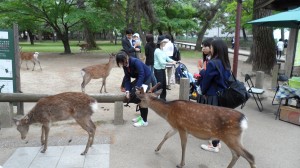
Deer and some Japanese schoolgirls

Super friendly deer

They get aggressive when fed
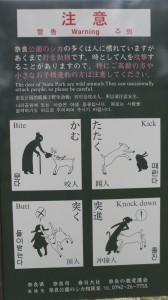
A deer warning sign

Sento-kun, Nara's creepy mascot
By the way, this is just a side story, but while Garrett and I were in Nara, some strange thing happened to us (actually mostly to Garrett). Anyway, we were just walking around minding our own business when this cute little Japanese elementary school boy and his friends stopped and said to Garrett, “Excuse me.” So Garrett said, “Yes?” and the boy asked “Where do you come from?” Garrett said “America.” and boy asked in return, “Do you like Japan?” Garrett answered, “Yes. はい。” (はい means yes in Japanese). And the kids looked a bit surprised that he answered in Japanese, so Garrett said “少し日本語がわかります。(I understand a little bit of Japanese)”. Then, the kids all smiled and said “ありがとうございます。ありがとうござくぃます。(Thank you, thank you.)” and walked off. Then, a little bit later, another group of elementary schoolers stopped Garrett again and asked pretty much the same questions and asked if they could take a picture with us. I think it is because Garrett has pretty light hair compared to most Japanese people. But the whole incident was very funny. I wish I had a picture to show you, but I did not think to take one until after!
So anyway, that was our trip to Nara!
June 12, 2012
Japan is a leading manufacturer (and consumer) of solar energy. 45% of all solar photovoltaic cells are produced in Japan and a great amount of what is produced is used by Japanese consumers. In fact, Japan has the 3rd largest solar capacity in the world (behind Germany and Spain).
Since I have been here in Japan, I have noticed the widespread use of solar panels. As I look around at buildings and even residential houses, I notice solar panels everywhere! Although the cost of solar panels in Japan is expensive, just like in the United States, they are somehow much more popular. It seems it is not at all uncommon for families to have solar panels on their homes!
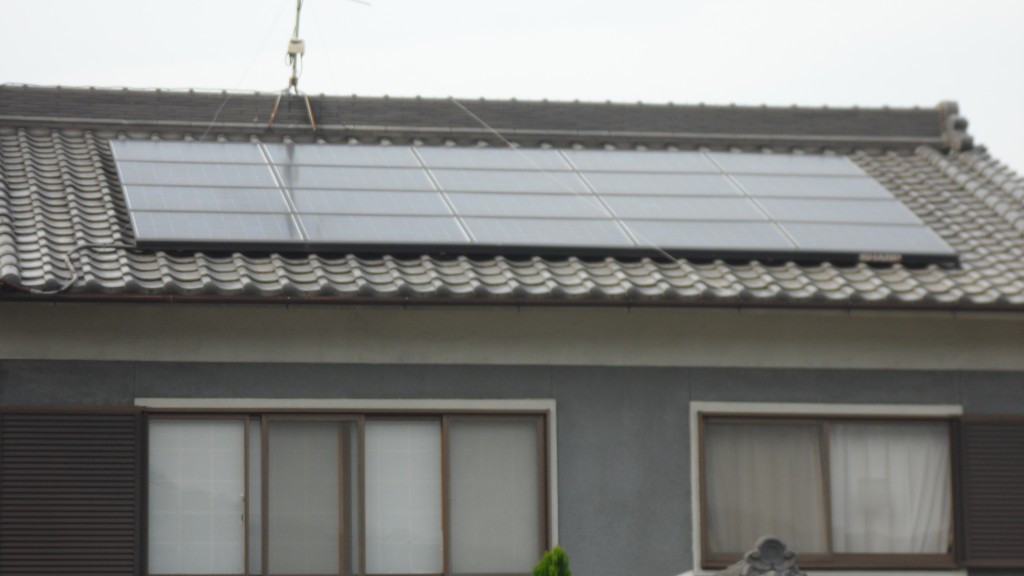
Solar panels on a Japanese house
Solar energy was already on the rise in Japan the past few years, but following the recent nuclear energy crisis that occurred in 2011 after the earthquake and tsunami, solar panels are apparently becoming even more popular. I spoke with some Japanese people, and many say they are not especially fond of nuclear power, but due to the high consumption of energy in Japan, there is not much of a choice. Because of this as well as the high prices of oil and coal derived energy, many Japanese families appear to be turning to solar power.
The government also plays a role in solar energy. They aim to meet 10% of total primary domestic energy needs with solar photovoltaic power by 2050 and are considering a making all new houses built after 2030 to come with pre-installed solar panels. The government also offers incentives to use solar power. In 2009, a feed-in tariff was enacted that required electric companies to purchase the excess power from homes and businesses for twice the standard rate.
June 3, 2012
Japan is a country with comparatively little natural resources, so it is not surprising that most Japanese people do not like to waste. However, it seems that conserving resources and not wasting is embedded in the foundations of Japanese culture. In Japan, it is polite to finish all the food on one’s plate, down to the very last grain of rice. But, there are even federal laws that require people to make the best use of their resources. First of all, every citizen is required to follow specific sorting rules for their waste (burnable, non-burnable, recyclable) which is collected by the city and stored for processing. Then, each year, recycling companies are required to collect the waste and transport it to the recycling facilities. To make sure the companies do their job, they are only paid once they show a delivery report signed by the receiving facility. Even more, businesses and manufacturers must pay a recycling fee that varies depending on the amount sold or produced. With all these regulations, it is not surprising Japan ranks very well compared to many other developed countries in terms of recycling.
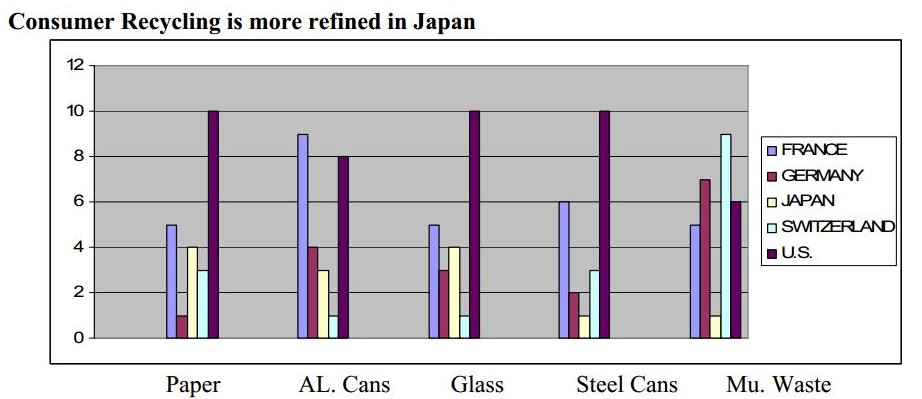
Comparison of recycling in various countries ; a lower number is more favorable (Kim, 2004)
For burnable things which are not paper, aluminum, glass, or steel, Japan uses incinerators. There are huge pros and cons to both landfills and incinerators, as both still contribute to pollution, but Japan attempts to make the best of incineration by recycle even the ash byproduct. Incinerators do not completely destroy waste. Instead, they reduce the mass by 80–85% and the volume by 95-96 %. So, Japan uses the remains from incineration to produce cement. Still, with all the negative effects of both landfills and incinerators, of course the best way to protect the environment is to minimize the amount of waste produced overall. In this category, Japan still ranks well. In a survey done by the OECD Environmental Data Compendium, the municipal waste of 17 different developed countries was measured, and Japan had the least waste per capita with nearly half the amount of the United States.
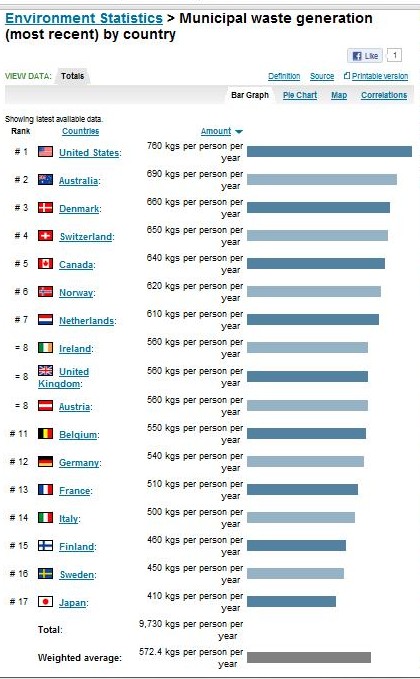
Comparing municipal waste in 17 developed nations (OECD Environmental Data Compendium, 2002)
Japan is a great example for other countries to follow as in terms of waste and conservation of resources. If other places could learn to minimize waste and process it as well as Japan does, the world would be well on the way to becoming a little more environmentally friendly!






























